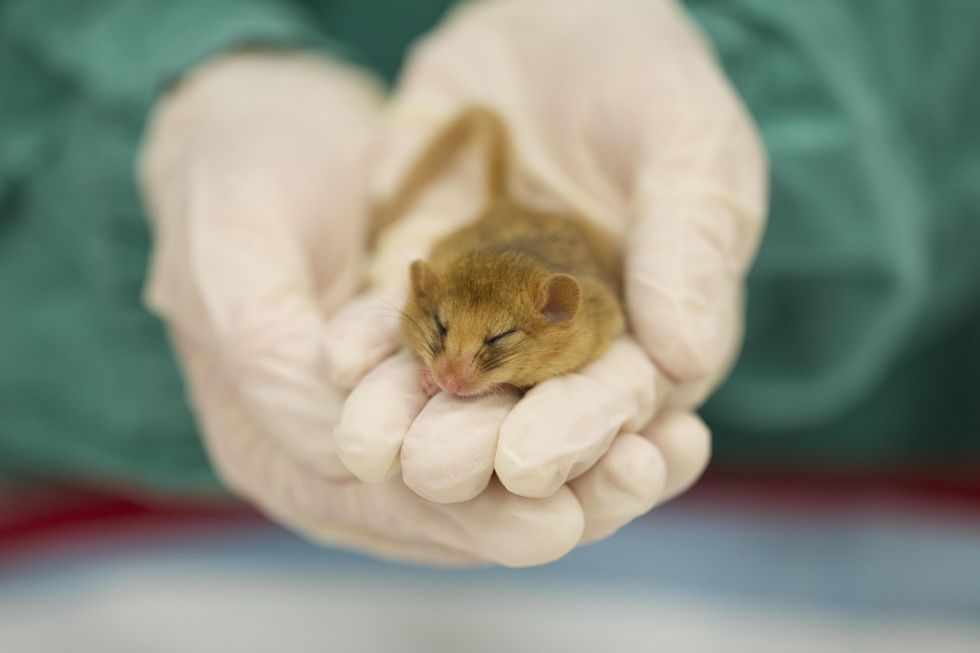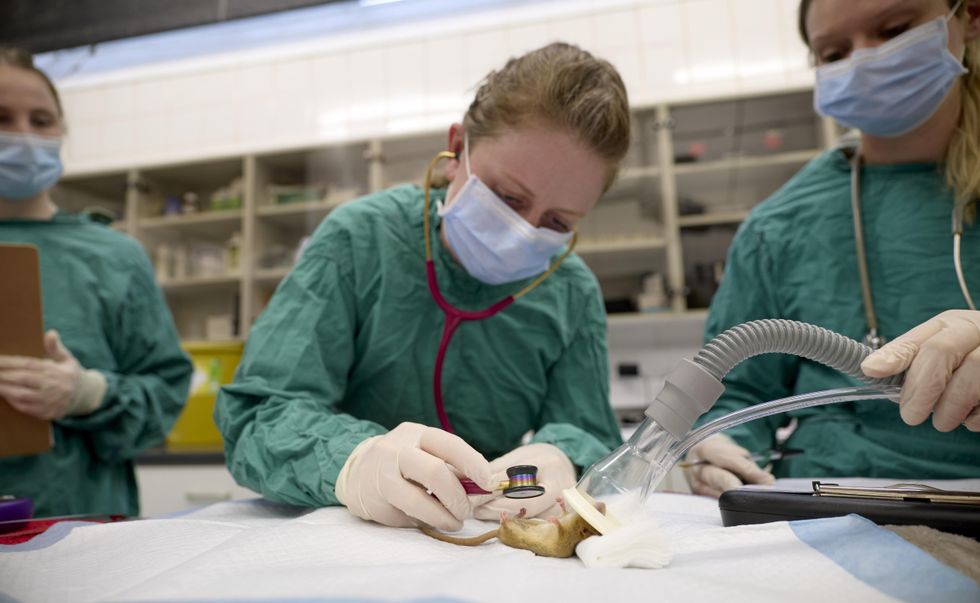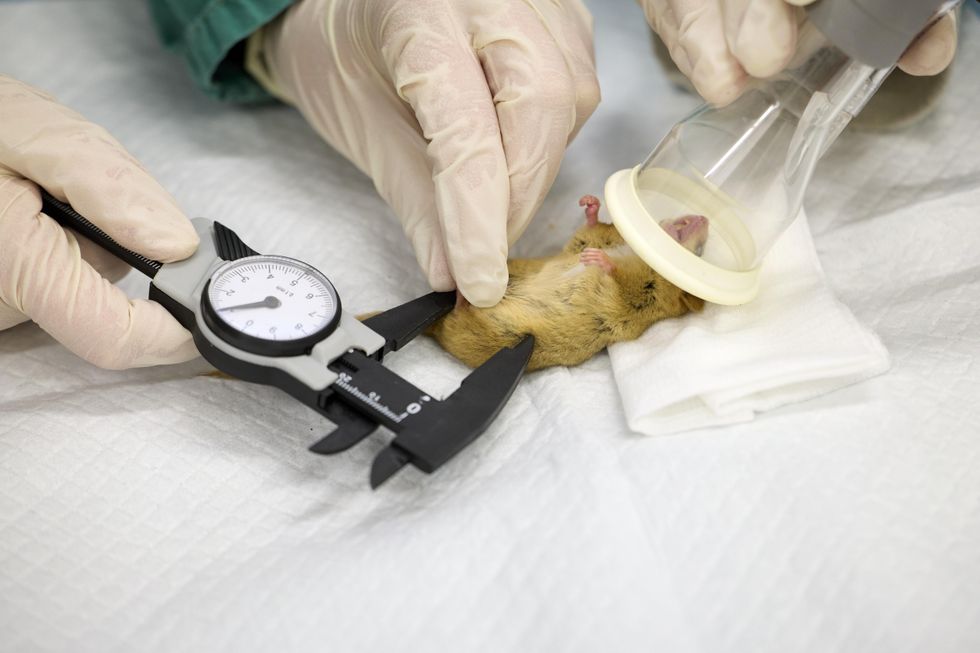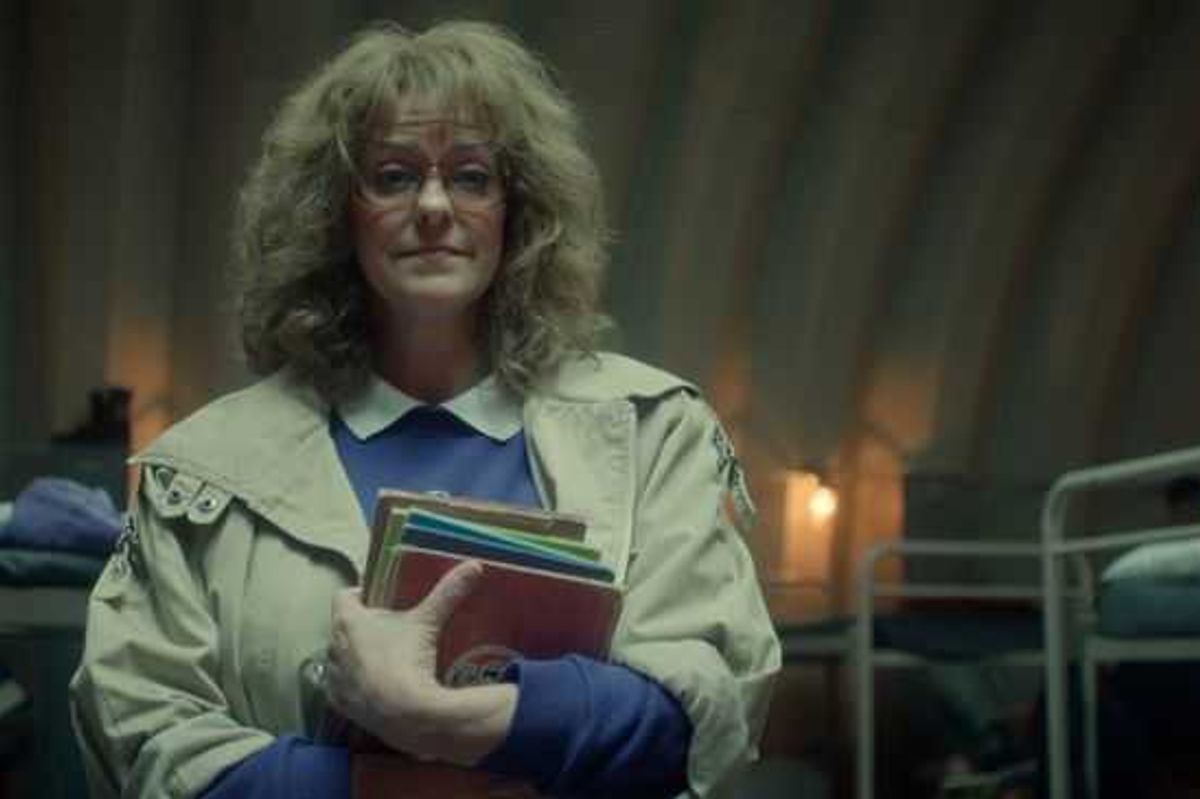Sarah Ping
May 20, 2025

Health checks are carried out on hazel dormice as part of conservation efforts to help reintroduce populations back into woodlands (ZSL/PA)
ZSL
Nine rare hazel dormice will be released into the wild next month following a successful health screening test.
Each of the tiny “charming” mammals, three of which were born at Whipsnade Zoo near Dunstable in Bedfordshire, received health checks from the Zoological Society of London’s (ZSL) Disease Risk Analysis and Health Surveillance Team (DRAHS).
It will mark the first time the ZSL has bred dormice to be released in the wild, according to zookeepers at Whipsnade Zoo.
The endangered animals were placed under anaesthetic to allow vets to check their heart, lungs, eyes, ears, nose, teeth and fur and ensure each dormouse was ready for release.

Each mouse has been microchipped to allow conservation teams to monitor the animals and how they adapt to their new woodland habitat.
Luke Pharoah, zookeeper at Whipsnade Zoo in charge of monitoring the dormice, said it feels “rewarding” watching their growth from small animals to healthy adults, adding it was “exciting” the mice had passed their health assessments.
“Whipsnade Zoo is the UK’s largest zoo, so we’re known for the larger animals that we care for – but behind the scenes, we’re also working with these charming little dormice,” he said.
“Watching these three dormice grow from tiny, dozy newborns into adulthood has been so rewarding, and it’s exciting to know that with the all-clear from our vets, they are now one step closer to raising their own young and boosting wild dormice numbers.
“Although we’ve supported DRAHS’s work for a long time, this is the first time in 20 years that ZSL has bred dormice for release into the wild, and we will continue to use our keeper expertise to breed and care for more dormice for these vital translocations.”
The checks formed part of national conservation efforts to recover populations of the vulnerable dormice, which were previously widespread across England and Wales.
A 2023 report conducted by the People’s Trust for Endangered Species (PTES) found the population of dormice had declined by 70% since 2000 as a result of habitat loss and climate change.
Through its annual dormouse reintroduction programme, the PTES hopes to reestablish hazel dormice populations in areas across England where the rodents are considered locally extinct.
The ZSL has been involved with PTES’s programme for 32 years, and it is hoped the health checks will help to reintroduce the dormice to 26 woodland habitats across 13 counties in England.
Dr Clare McNamee, wildlife vet at ZSL’s Institute of Zoology, who led the health checks, said: “We’re delighted to report that all nine dormice passed their health checks and are now ready for their big move in just a few weeks’ time.
“These dormice might be tiny, but they have a big impact on their woodland habitat. By restoring dormouse populations, we’re making huge steps to protect and recover all the wildlife they live alongside.”

The health checks are also designed to help reduce the risk of disease being introduced into the woodlands where the dormice will be released.
The DRAHS team is working with Natural England, a public body sponsored by the Department for Environment, Food and Rural Affairs, to monitor the health of more than 30 different species to ensure the animals are healthy before release.
Dr McNamee said their work will help ensure “dormice are fit and set up for success in their new homes, but it also helps to protect these habitats by reducing and monitoring the risks from disease”.
The furry dormice are currently living in ZSL’s London Zoo, where they are receiving specialist care and being monitored closely ahead of their release into the wild.
Top 100
The Conversation (0)













